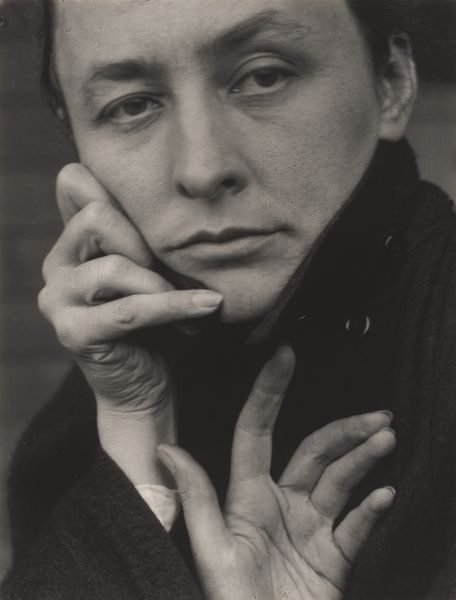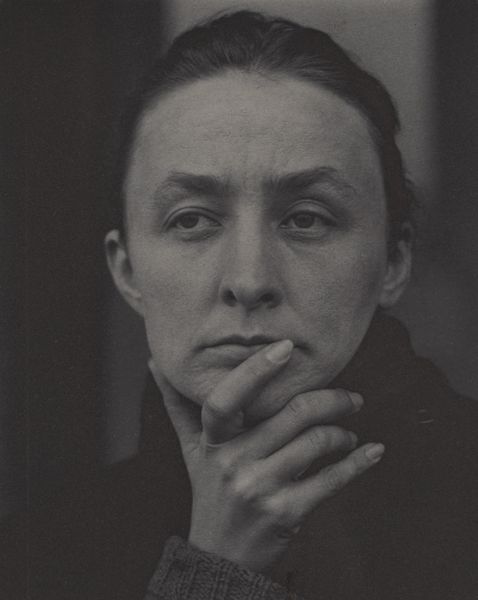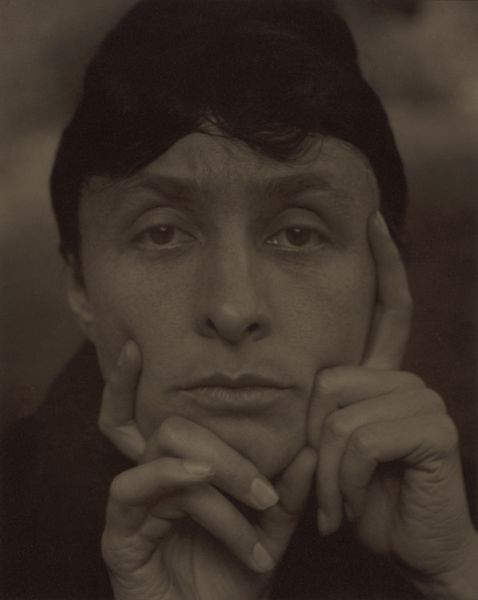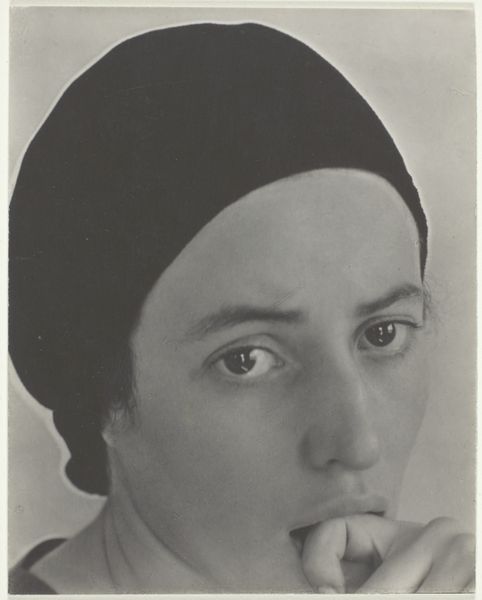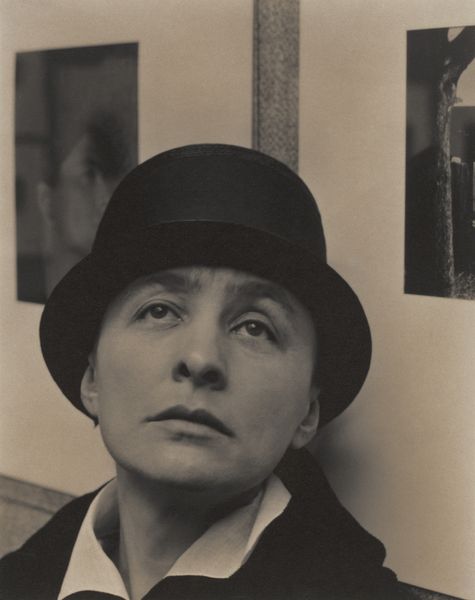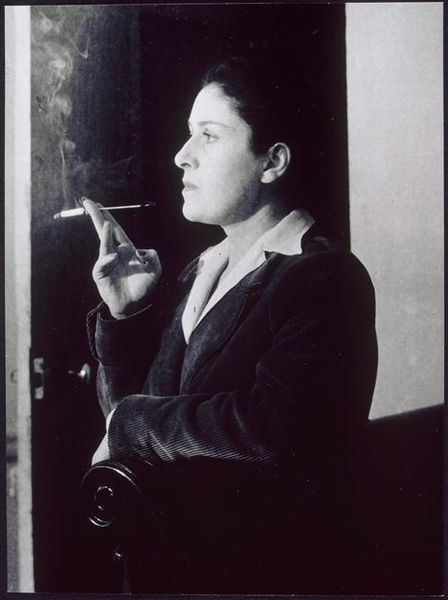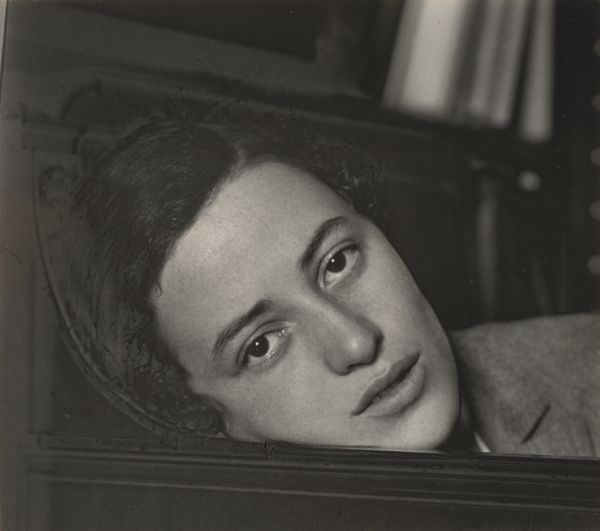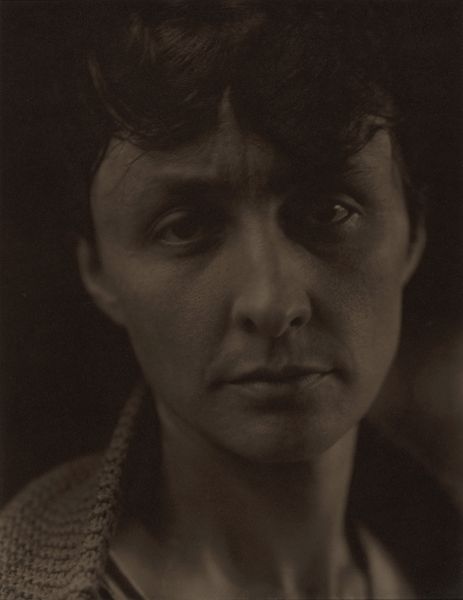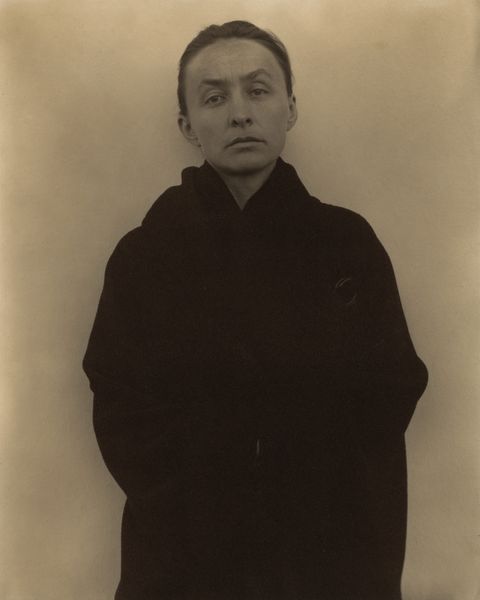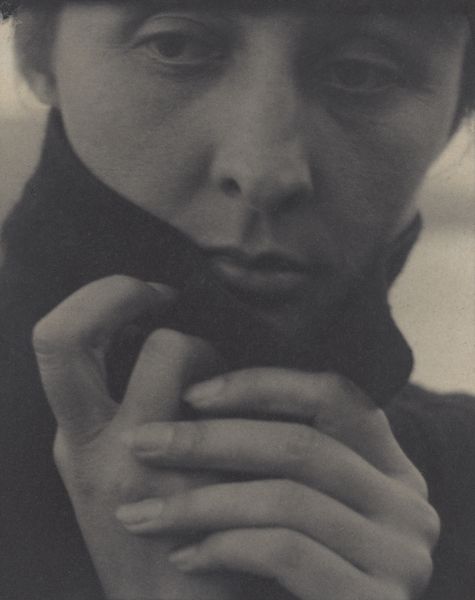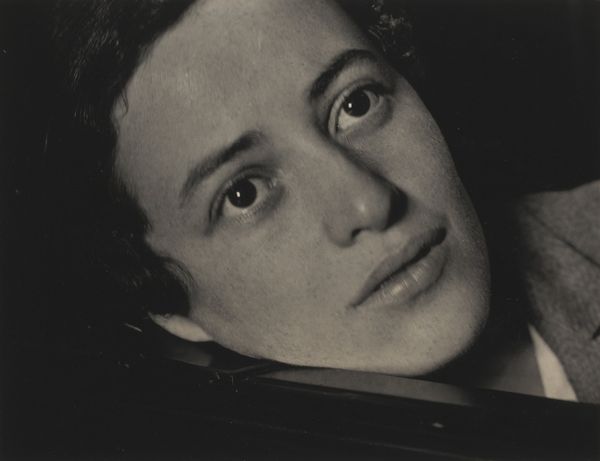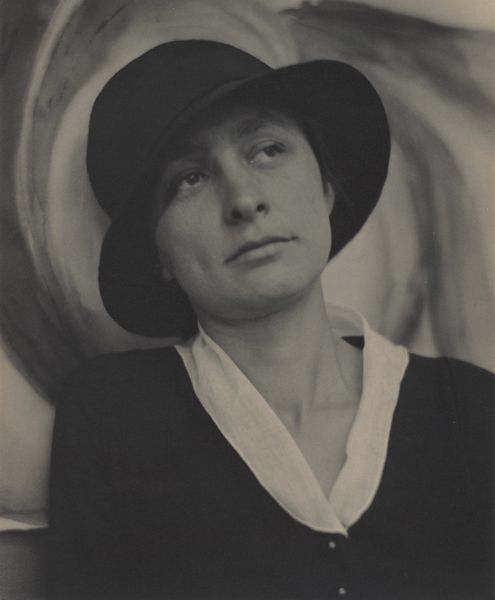
silver, paper, photography
#
portrait
#
silver
#
pictorialism
#
portrait
#
paper
#
photography
#
modernism
Dimensions: 11.4 × 9.1 cm (image/paper/first mount); 31.8 × 25.4 cm (second mount)
Copyright: Public Domain
Curator: Here we have a silver print by Alfred Stieglitz, simply titled "Georgia O'Keeffe", from 1918. It's currently part of the collection at The Art Institute of Chicago. Editor: My first impression is one of stark intimacy. The high contrast and close framing feel very revealing, almost confrontational. It's like stepping into a private moment. Curator: Absolutely. Stieglitz, through his lens, was deeply involved in shaping O'Keeffe's public image as an artist, a muse, and an independent woman. This portrait, one of many he took of her, served to promote her work but also arguably, construct a particular narrative around her identity. Editor: A narrative which I see, even today, as conflicted. We see a powerful female artist through the gaze of a male photographer, and one with whom she had a very complex personal relationship. There's vulnerability here, evident in the soft light and her unguarded expression, but also a quiet defiance in her steady gaze. Curator: The influence of pictorialism is evident in Stieglitz's approach. He manipulates light and shadow to create an almost painterly effect, softening details and emphasizing mood. Think about how that technique functioned within debates on art at the time and how photography fought for respect on equal ground with painting. Editor: I'm struck by the hands. They’re so prominent, almost framing her face. Hands that could be seen to create her art, perhaps. But here, they seem to be both a shield and a point of contemplation. It makes me consider the performative aspect of self-representation. Curator: And consider how her very being became interwoven into Stieglitz’s project to establish photography as a high art form within American modernism. Their relationship was symbiotic but inevitably shaped by the societal power structures of the time. Her persona was strategically presented. Editor: It definitely compels me to think about the woman beyond the image, beyond the Stieglitz narrative. I can't help but feel how images like this, while aesthetically beautiful and technically masterful, were part of the commodification of the female artist's identity. Curator: It's a pertinent observation that allows us to consider both Stieglitz's artistry and the complex relationship between artist, subject, and the societal forces that shape their perception. Editor: Absolutely. This photo is an entry point into discussing art and power, reminding us to look beyond the surface.
Comments
No comments
Be the first to comment and join the conversation on the ultimate creative platform.
